I have commented many times on women in Paris who in their day became very famous for their exploits inside and outside the bedroom. (Click here to read, Cyndi Lauper and the Naked Princess, and here to read Grace Under Fire, and here to read American “Grande Horizontale” and Nazi Collaborator.) These courtesans traveled in the highest levels of society and had affairs with well-known politicians, soldiers, authors, and wealthy men. One common trait they shared was a lack of shyness. Like many of today’s celebrities, these women knew their livelihood relied on publicity.
Our subject today, Fortunée Hamelin, is the “poster child” for what was considered outrageous behavior at the time (today, I suppose her antics would seem quite docile). She entered Parisian society during the final years of the French Revolution and gained her notoriety during the Directoire period (1795−1799). Fortunée became the “toast” of Napoléon’s empire and lived through the restoration of the French monarchy, and the subsequent establishment of the Second Republic.
Fortunée was a high-spirited, intelligent, and beautiful woman. She was considered one of the free-wheeling Merveilleuse, or loosely translated as “Marvelous of the Directory.” She was also called the “greatest rascal in France.” Today, I have no doubt that Fortunée would be a regular in celebrity publications as well as social media.
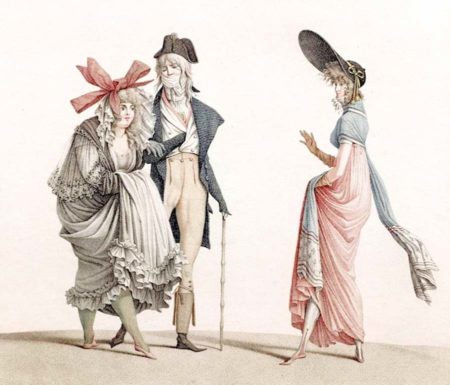
Did You Know?
Did you know that the last surviving Nuremberg prosecutor died last month at the age of 103? Benjamin Ferencz (1920−2023) was the chief prosecutor for the Einsatzgruppen Trial (Case 9), one of the twelve follow-up trials to the main military tribunal that ended with the conviction of nineteen senior Nazi leaders (twelve death penalties, three life sentences, and four long-term prison sentences).
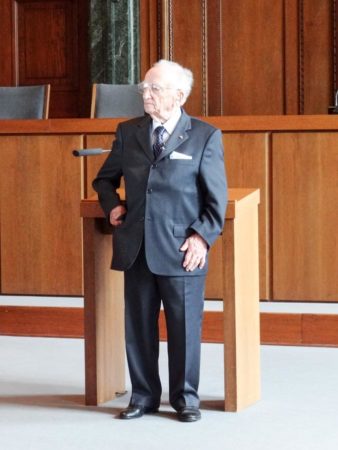
The SS Einsatzgruppen were mobile execution units that followed the Wehrmacht into the occupied countries (primarily eastern European countries). They were responsible for the mass murders of Jews, Romani people, intelligentsia, Russians, partisans, and other Untermensch, or non-Aryan people the Nazis considered inferior. The murders ranged from a few people at one time to wholesale massacres such as the Rumbula massacre where 25,000 Jews were shot over a two-day period and the massacre at Babi Yar with the murder of 33,771 Jews. It is estimated that the Einsatzgruppen were responsible for the deaths of two million men, women, and children of whom 1.3 million were Jewish.

At the age of twenty-seven, Ferencz was appointed to the Nuremberg legal team of Telford Taylor who named Ferencz as the chief prosecutor for Case 9. Twenty-two defendants were on trial and all were convicted. Fourteen received the death sentence (four were hanged) while the rest received either life in prison or lengthy sentences. By 1958, every prisoner had been released. (Click here to read the blog, Courtroom 600 and here to read The Wise Men).
After the trials, Ferencz stayed in Germany and participated in the reparation and rehabilitation programs for the victims of the Nazis. He also took part in the negotiations between Israel and West Germany for reparations. Returning to the United States, Ferencz joined Taylor’s law firm. Ferencz was instrumental with the formation of the International Criminal Court in the Hague, Netherlands. He always argued that “use of armed force to obtain a political goal should be condemned as an international and a national crime.”
The United States Holocaust Memorial Museum said the world had lost “a leader in the quest for justice for victims of genocide.”

Let’s Meet Fortunée Hamelin
Jeanne Geneviève Fortunée Lormier-Lagrave (1776−1851) was born on the island of Santo Domingo, then a French colony. (It shares the island with Haiti and today, is known as the Dominican Republic.) She was the mixed-race daughter of Jean Lormier-Lagrave (1744−1794), a wealthy sugar plantation owner, and Geneviève Prévost (1759−1827). Although there is somewhat of a mystery surrounding the status of her birth, she was officially the legitimate daughter of Lagrave and he supported her as such.
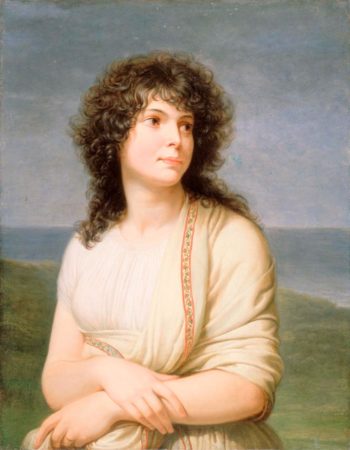
Fortunée grew up on the Maribaroux plantation and when she reached the age of eleven, her father sent his daughter to Paris along with her mother. The goal was to continue her education and meet a rich man for the purpose of marrying. Fortunée’s education in a religious organization emphasized subjects considered essential to young aristocrats. She excelled in reading and conversation. However, the restless girl felt trapped in her surroundings. In the meantime, her mother was following instructions to quickly locate a suitable husband for her young daughter.
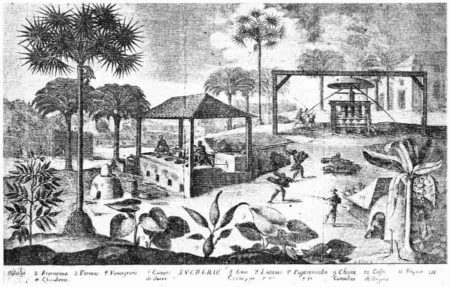
“Her face was more original than beautiful. She wore the heavily accented Creole type. She had a very dark complexion, red and thick lips, white and pointed teeth, magnificent black hair, the size of a nymph, a child’s foot, and an extraordinary grace which made her almost the equal of the beauty queens of the world.”
⏤ Comtesse de Bassanville
Description of Fortunée Hamelin
Marriage
Geneviève’s choice for the marriage was Antoine-Romaine Hamelin (1770−1855), a very wealthy man who happened to be Fortunée’s cousin. Hamelin supplied goods to the French army during the revolution and was thus spared by Robespierre.
At the age of fourteen, Fortunée married Romain Hamelin, eight years her senior. Like many marriages of that era, it was a marriage of convenience and not love. However, it gave Fortunée exactly what she had been looking for: freedom and independence. Her new husband described Fortunée as “. . . a very special little creature, with a big head and a square waist, she was steeped in grace. Dark, to the point of making people doubt the purity of her blood, the most beautiful hair in the world, a big mouth but very fresh and always laughing. With all that, broken-reason, ignorant, witty, gifted with a singular disposition for dance and music.”
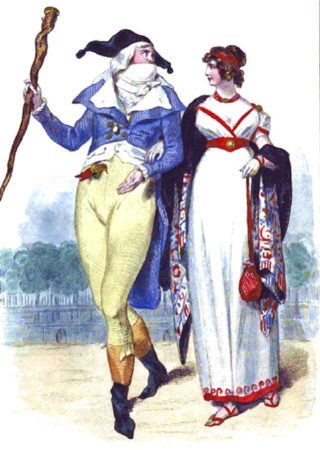
Throughout their marriage, Fortunée participated in various affairs. One of her lovers was the Hussar, François Fournier-Sarlovèze (1773−1827). He gained fame by challenging an opponent to fourteen duels. Another lover, Gabriel-Julien Ouvrand (1770−1846), was a corrupt banker who offered considerable amounts of money to Fortunée. However, she declined to accept the ill-gotten money. Perhaps Fortunée had a certain moral code? Anyway, Romain finally had had enough and he divorced Fortunée in 1804.

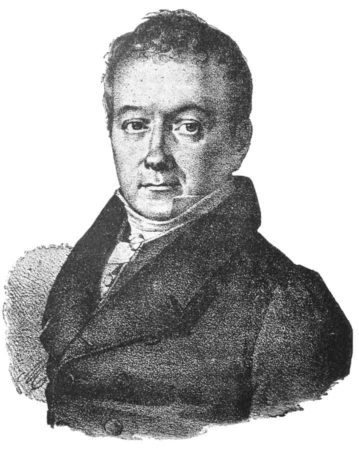
Inheritance
Fortunée’s father died around 1794 in a shipwreck while traveling to America. He left a small residence in Paris to his only daughter. Located at 58, rue d’Hauteville, the townhouse (known today as the Hôtel de Bourrienne) was immediately occupied by Fortunée. During the Directoire, she held her salon which attracted the best and brightest of Parisian society. The bourgeoisie wanted to forget the revolution and focus on the pleasurable and opulent aspects of post-revolutionary Paris. At a substantial cost, Fortunée commissioned the redecoration of the mansion’s interior. Unfortunately, she was forced to sell the house in 1801 due to her heavy debt. (Louis Antoine Fauvelet de Bourrienne purchased the mansion but rarely lived there and finally sold it in 1824.)


During the days of her salon, Fortunée became known as the “Marvelous Madame Hamelin.” This was a common “title” for women during the Directoire who displayed both wealth and the desire for independence. Fortunée qualified for another reason: she liked to shock people.
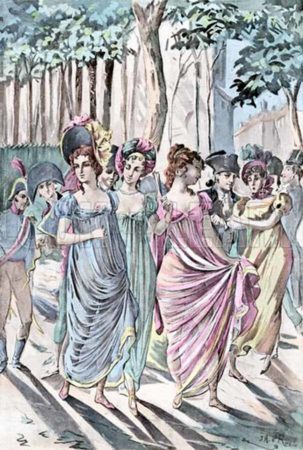
Parisian Fashion
Once Robespierre was gone and the Terror was over (refer to my book, Where Did They Put the Guillotine?), relief spread through the city. Overnight, laws prohibiting extravagant dress were repealed, private carriages reappeared, and domestic servants were allowed again. Out were the red caps and carmagnole fashions of the revolutionary years. In were provocative Greek or Roman style of dress (or undress?).
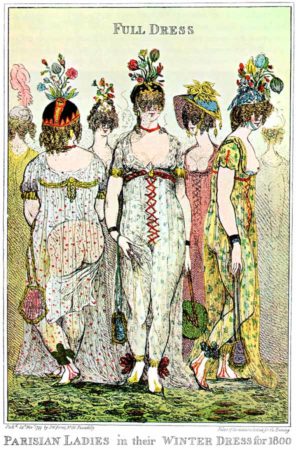
These restored freedoms provided Fortunée and the other Merveilleuses the opportunity to push the envelope with respect to extreme and outrageous fashions. It was Fortunée who led the pack with her flimsy, low-cut barely-there gowns, and huge bouffant hairstyle. Her thick curls accentuated the risqué garments. One of her outfits was a transparent chiffon gauze gown over flesh-colored underclothes with a slit up the thigh. Her breasts were exposed and the whole thing was secured only by a simple sash. After her husband learned about one of his wife’s public displays, he immediately sent her to Italy. It was a decision that had a life-long effect on Fortunée.
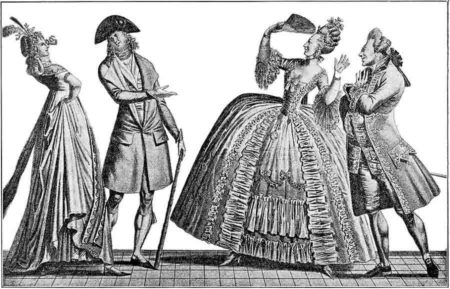
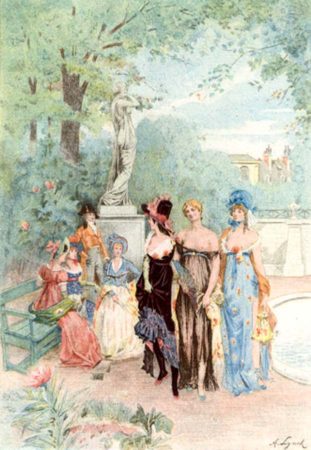
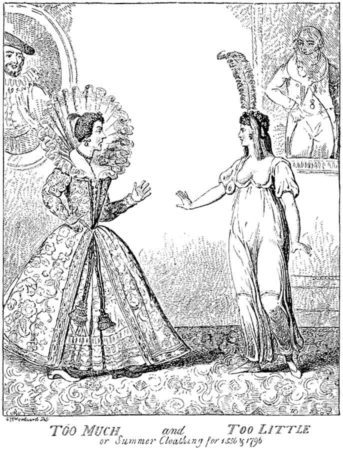
Joséphine de Beauharnais
Fortunée led a trio of women as contemporary icons of the new fashion frenzy. Madame Tallien, Juliette Récamier, and Joséphine de Beauharnais (1763−1814) were leaders (and competitors) of the audacious, eccentric, and ingenious fashion novelties. One written account describes Fortunée and a friend: “Two young women get out of a pretty convertible, one decently dressed, the other bare arms and throat, with a single gauze skirt over flesh-colored trousers. The half-naked woman is insulted. No one could see without indignation the indecent turn of this lady of ‘New France’.”
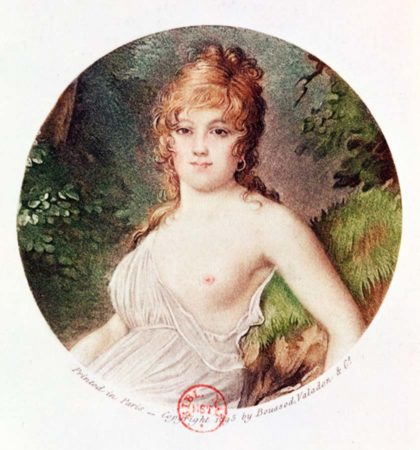
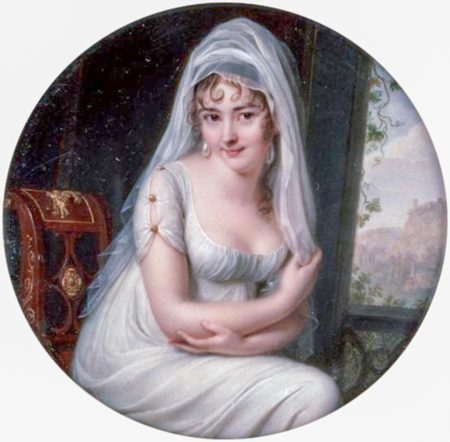
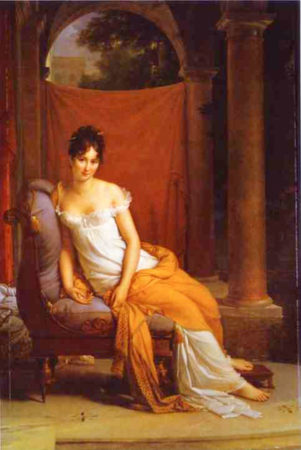
While in Italy, two significant events occurred. First, Fortunée gave birth to her son, Édouard (1797−1852) and later to a daughter. Second, she was introduced to Joséphine de Beauharnais who was married to Napoléon Bonaparte. Joséphine and Fortunée shared similar backgrounds: both grew up on sugar plantations, both were from a Creole family, and both women were stunningly beautiful. Oh, and both liked to “collect” wealthy men.
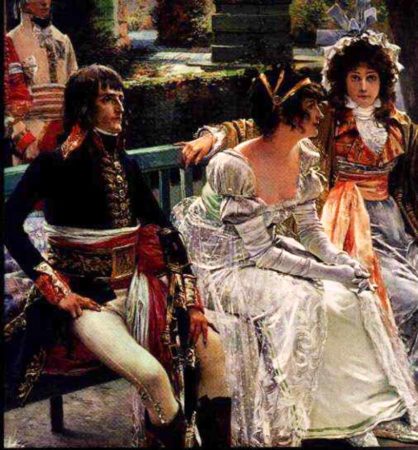
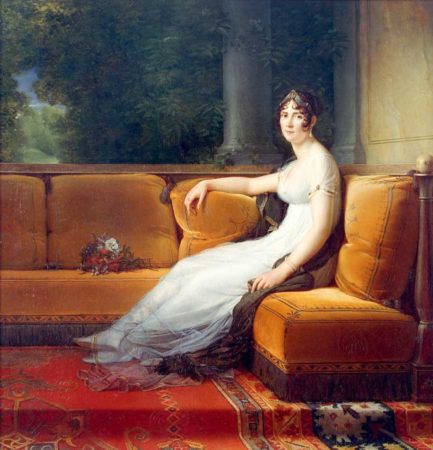
Introduced to Napoléon by Joséphine, Fortunée fell for the army general. While the future emperor was equally smitten, nothing ever happened between the two of them. However, Fortunée did serve Napoléon in other ways. She funneled information back to him from her salons attended by politicians, businessmen, and military attachés. Napoléon compensated her with four thousand francs per month. After the emperor was exiled to Elba in 1814 and the monarchy was restored, Fortunée continued to spy for him. However, after Waterloo and Napoléon’s final exile to St. Helena, Fortunée was banished from France and exiled to Brussels, Belgium. Two years later after pressure on the government from her friends, Fortunée was allowed to return to France.
Later Years
After returning to France, Fortunée purchased a town house on rue Blanche in the ninth district. (Victor Hugo was her neighbor at no 70.) Never concealing her sympathies for Napoléon, Fortunée started up another salon that soon became one of the most sought-after events to attend in Paris. It became a melting pot for former Bonapartists, royalists, and those disillusioned by the restoration of the monarchy. In other words, Fortunée picked up where she left off years earlier. Not surprisingly, French authorities kept her under surveillance, and she was closely monitored. Soon, the police realized that her contacts could be of benefit, and they put Fortunée on the police payroll as “Madame Deschamps.”
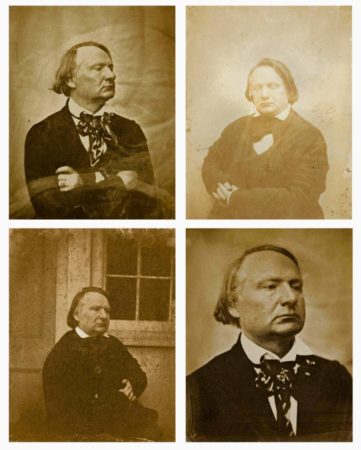
Fortunée became a property developer and began buying up land in the new and fashionable neighborhood around the Arc d’Triomphe. By now she was attracting artists and writers into her inner circle of friends. While her stunning looks were fading from age, she was still described as “coquettish and striking.”
Throughout this time, Fortunée stayed in touch with the exiled Bonaparte family, and she celebrated when Louis-Napoléon Bonaparte (1808−1873), became president of France in 1848. Unfortunately for Fortunée, she passed away before Napoléon’s nephew became emperor of France’s Second Empire in 1852. Fortunée’s later years were marred by illness, property disputes, the sudden death of her daughter, and the loss of many friends and former lovers.
Burial
Fortunée died of apoplexy in Paris at the age of seventy-five and was originally buried in the Montmartre cemetery. Shortly afterward, Fortunée’s remains were removed and transferred to Père Lachaise where she was buried in the vault built for her daughter. The vault is located on Chemin Talma (1 ére ligne), in the 11th division.

Although Fortunée Hamelin has receded into history, “France’s biggest prank,” “greatest rascal in France,” and “la plus grande polissone en france,” or “the biggest scamp in France,” was much more than the headlines indicated. In terms of today’s vernacular, the Marvelous Madame Hamelin was an “Influencer” of fashion, politics, and social morals during the hedonistic period following the French Revolution
Next Blog: “Desktop Murderer & British Agent”
Correspondence and Commentary Policy
We welcome everyone to contact us either directly or through the individual blogs. Sandy and I review every piece of correspondence before it is approved to be published on the blog site. Our policy is to accept and publish comments that do not project hate, political, religious stances, or an attempt to solicit business (yeah, believe it or not, we do get that kind of stuff). Like many bloggers, we receive quite a bit of what is considered “Spam.” Those e-mails are immediately rejected without discussion.
Our blogs are written to inform our readers about history. We want to ensure discussions are kept within the boundary of historical facts and context without personal bias or prejudice.
We average about one e-mail every two days from our readers. We appreciate all communication because in many cases, it has led to friendships around the world.
★ Read and Learn more About Today’s Topic ★
Cooney, Christy. Ben Ferencz: Last surviving Nuremberg prosecutor dies, aged 103. BBC, 9 April 2023.
Erickson, Carolly. Josephine: A Life of the Empress. New York: St. Martin’s Griffin, 1998.
Hamelin, Fortunée and Gayot André. Une ancienne muscadine, Fortunée Hamelin: Lettres inédites 1839−1851. West Columbia, TX: Wentworth Press, 2018. (French edition)
Lescure, Maurice. Madame Hamelin: Merveilleuse et turbulente Fortunée (1776−1851). Paris: Éditions L’Harmattan, 1995. (French edition)
Nuremberg Municipal Museums (editor). Memorium Nuremberg Trials, The Exhibition. Nürnberg: Museen der Stadt Nürnberg, 2012.
Taylor, Telford. The Anatomy of the Nuremberg Trials: A Personal Memoir. New York: Knopf, 1992.
Disclaimer:
There may be a chance that after we publish this particular blog, the video links associated with the blog are no longer accessible. We have no control over this. Many times, whoever posts the video has done so without the consent of the video’s owner. In some cases, it is likely that the content is deemed unsuitable by YouTube. We apologize if you have tried to access the link and you don’t get the expected results. Same goes for internet links.
What’s New With Sandy and Stew?
Upon returning from our river cruise in Holland, Sandy and I were left with a vacation legacy: COVID. Not sure where we picked it up (we have our suspicions) but it’s likely we weren’t the only ones affected. We isolated for seven days, took the prescribed COVID medicine, and then tested negative. All clear for our trip to Prague, Berlin, and the Elbe river.
Thank you to all of you who subscribe to our bi-weekly blogs. It seems there isn’t a day that goes by where we don’t increase our readership. Please let your history buff friends and family members know about our blog site and blogs.
Someone Is Commenting On Our Blogs
Thanks to Colin C. for contacting us regarding the image of Léon Faye (click here to read the blog, Noah’s Ark). Colin’s father was the London contact for Marie-Madeline, head of réseau Alliance. Colin, I hope you decide one day to share your father’s memoirs.
We appreciated KP. D.’s comments regarding Vera (click here to read the blog, The Beautiful Enigma). It only goes to show you what an enigma Vera was.
John G. M. also reached out to us regarding The Beautiful Enigma, and we appreciated his comments.
If there is a topic you’d like to see a blog written about, please don’t hesitate to contact me. I love hearing from you so keep those comments coming.
Do you enjoy reading? Do you have a hard time finding the right book in the genre you enjoy? Well, Ben at Shepherd.com has come up with an amazing way to find that book.
Shepherd highlights an author (like me) and one of their books (in our case, it is Where Did They Put the Gestapo Headquarters?). The author is required to review five books in the same genre. So, if a reader is interested say in cooking, they can drill down and find specific books about cooking that have been reviewed by authors in that category. Very simple.
If you like to read, I highly recommend you visit Shepherd.com. If you do, please let me know what you think and I will forward Ben any suggestions or comments you might have.
Click here to visit Shepherd’s website.
Click the books to visit Stew’s bookshelf.
Share This:
Follow Stew:
Find Stew’s books on Amazon and Apple Books.
Please contact Stew directly for purchase of books, Kindle available on Amazon. Stew.ross@Yooperpublications.com or Contact Stew on the Home Page.
Please note that we do not and will not take compensation from individuals or companies mentioned or promoted in the blogs.
 Walks Through History
Walks Through History
Copyright © 2023 Stew Ross








Hi Stew,
Just read the piece on Madame Hamelin, very informative. She was quite a woman indeed.
Anyway I just want to mention something about those marvelous ladies. The French spelling is ‘MERVEILLEUSE’. Maybe it was a typo but this is the right spelling in case you need to use this word again.
Glad you are well again. Had COVID myself, pre-vaccin and post-vaccin
Big difference ! Take care and keep up the good work. Love it.
Hi Nicole, always great to hear from you. Thank you for pointing out the spelling error. I don’t think it was a typo. I have to chalk this one up to not verifying the correct spelling. We’ll get that changed in the blog for future readers. We had covid after many boosters but it wasn’t really that bad. Sort of like getting the flu but without the fever. I suppose we would have been in worse shape without the vaccines. Thanks for the positive message about our work. Greatly appreciated! Talk soon. STEW